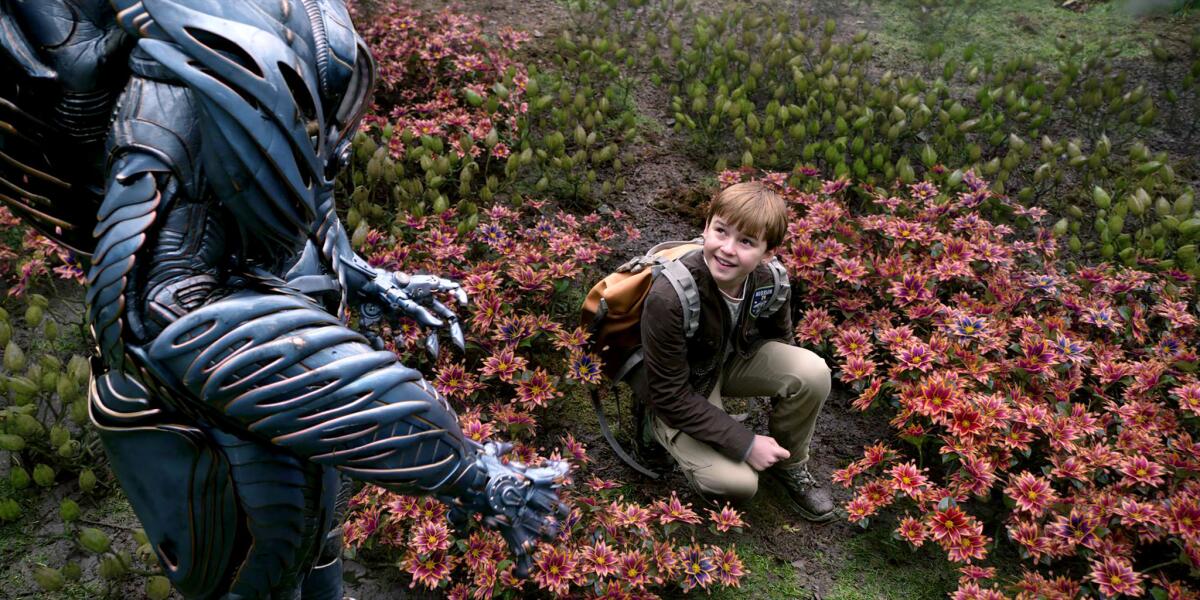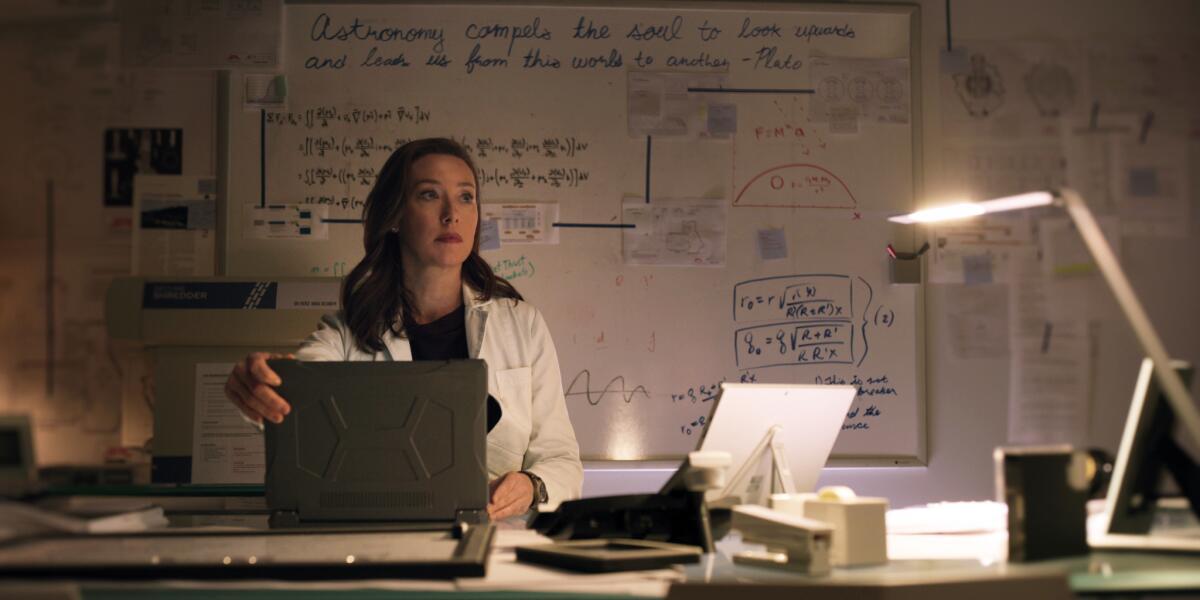Production designer Ross Dempster explains his future-forward look on Netflix’s new ‘Lost in Space’
In reimagining Netflix’s reboot of the classic ’60s TV show “Lost in Space” (and the subsequent 1998 film) for 2018 audiences, production designer Ross Dempster didn’t necessarily look to the show’s ancestry as a source of visual inspiration. Instead, he took a cue from Stanley Kubrick’s 1968 masterpiece “2001: A Space Odyssey.”
“For a movie that was made in the ’60s, the design of [‘2001’] holds up by the simplicity of it,” Dempster said in a recent telephone interview about the film, which celebrates its 50th anniversary this month. “It’s not overthinking too much. That was probably the biggest influence was trying to emulate how powerful that ended up being because it didn’t try and oversell anything.”
But there’s more to it than that. So we spoke to Dempster, whose design work also can be seen in “Wayward Pines” and the Canadian series “Motive,” about updating the futuristic look of Netflix’s “Lost in Space,” which is now available to stream.
Walk me through designing some of the spaces like the spaceship, the family’s home or the outside world.
Well, with the spaceship, I mean, we’ve got a family who are very much like any family that’s out there today. The parents are going through a divorce. There’s multiple older relationships and stepchildren and just the whole gamut of the everyday family. This is their home. This ship that they’re going to be on is their home. How can you represent the home? It literally started around the kitchen table.
If you look at the design, the very center of the design and the set is a table where the whole family fits around. We see it in our first episode. It’s where they meet. It’s where they plan. It’s where they eat. It’s all about how that family operates together. I wanted it to feel like this was a modern home. You have the center hub of the kitchen and where everybody meets. Everything else started off of that.
As for their actual home on Earth, it was about just trying to imagine a future. We went for a very modern design in our location choice and just ... again, didn’t go too far with that so that it felt recognizable. We’re only supposed to be a short period ahead of where we are now. It was trying to stay in keeping with that.

The series was shot in Vancouver. For the scenes that weren’t shot on a sound stage, how did the geography of the area bring texture to the landscape shots?
Quite a lot. It’s quite the look of the Pacific Northwest from Washington, Oregon upward, it starts to have a very significant look. We wanted to make that different and feel like another world. My pitch was to embrace what we have, and just turn up the volume on it a little bit. OK, it looks fairly rain forest-like. Let’s embrace that. We can’t change it. There’s no point in trying to make it look like something it can’t be. Let’s just imagine Earth on steroids. Trees that just did incredibly different things, but still basing them on the realities of what’s here.
I was looking at root structures of existing plants and trees. Then I just blew them up a thousand times bigger and exaggerated things. Again, sticking with things that we have on Earth as a basis for it just so people could believe and fall into this world easily.
What was the smallest detail you found yourself thinking about for a show like this?
Every single one of them. Pretty much every corner of the landscape, every corner of interior there was something that we’d gone to the ends of the earth to really get the details right. Interior [of the] ship, it’s down to material choices, how they’re going to react under certain lights, certain textures, materials. I want things to look like a modern space station where you can see metals, and you understand what they’re made of.
Then in the landscapes, we have plants that ended up right behind somebody’s head, and they have to hold up and still look different. It’s pretty hard to recreate nature. You have to make very careful choices. For example, when I was talking about root structures earlier, I turned something that is, on Earth, smaller than your pinky finger, and instead took a texture that you can see really close up on that and blew them up to the size of a tree trunk. What you get from that is it just completely changes your interpretation of what you’re looking at. You get new surfaces.

What’s it like updating something that’s been part of people’s childhoods?
Well, I may have been a bit naughty on that because although I’ve seen the show when I was a kid and seen all the reruns, I didn’t look back at it. I haven’t seen it in years. I wanted to look at it with fresh eyes, so I didn’t look at the show for the longest time and just wanted to explore and see where it would go. I think it worked.
Ironically, as it turns out, when I did look back at some of the designs, there were some strange correlations where it looks like I might have been influenced by [the original series] subliminally 20-odd years ago.
For example, I was driving around the lot, and I was trying to think about what one of the panel designs would be around our corridors and what kind of pattern might be on it. I happened to see this giant water cooler, turned upside down, it wasn’t even filling the right way up. It had this really cool pressed metal panel pattern on the bottom of it. I just robbed the pattern. I thought it was a very good stylistic thing. Then it turns out if you look back at the panels that were in the original “Lost in Space” ship, they look like I just thought, “Oh, I’ll do a modern version of that.” They’re very similar.
Even our hub design has these domed ceilings, and then there’s support structures. That’s another thing that turned out to be a total coincidence because I deliberately didn’t look back at the show, but then it ended up being reminiscent of it anyway. It was kind of cool. I liked that.
How would you say your job has changed in the past few years because of things like visual effects or digital extensions?
You have a whole other aspect that normally you would be thinking of in hard scenery. Now you’re thinking of it in a digital world that is intangible at that particular moment. It’s just an extra thing.
You have to have your goal as a designer and understand how digital effects are going to work and what works, ultimately. There’s lots of bad effects that get done. Sometimes it’s a budget constraint, but sometimes it’s a bad planning thing. You need good people working together, and we were lucky enough. That’s what we had.
Twitter: @villarrealy
The complete guide to home viewing
Get Screen Gab for everything about the TV shows and streaming movies everyone’s talking about.
You may occasionally receive promotional content from the Los Angeles Times.




